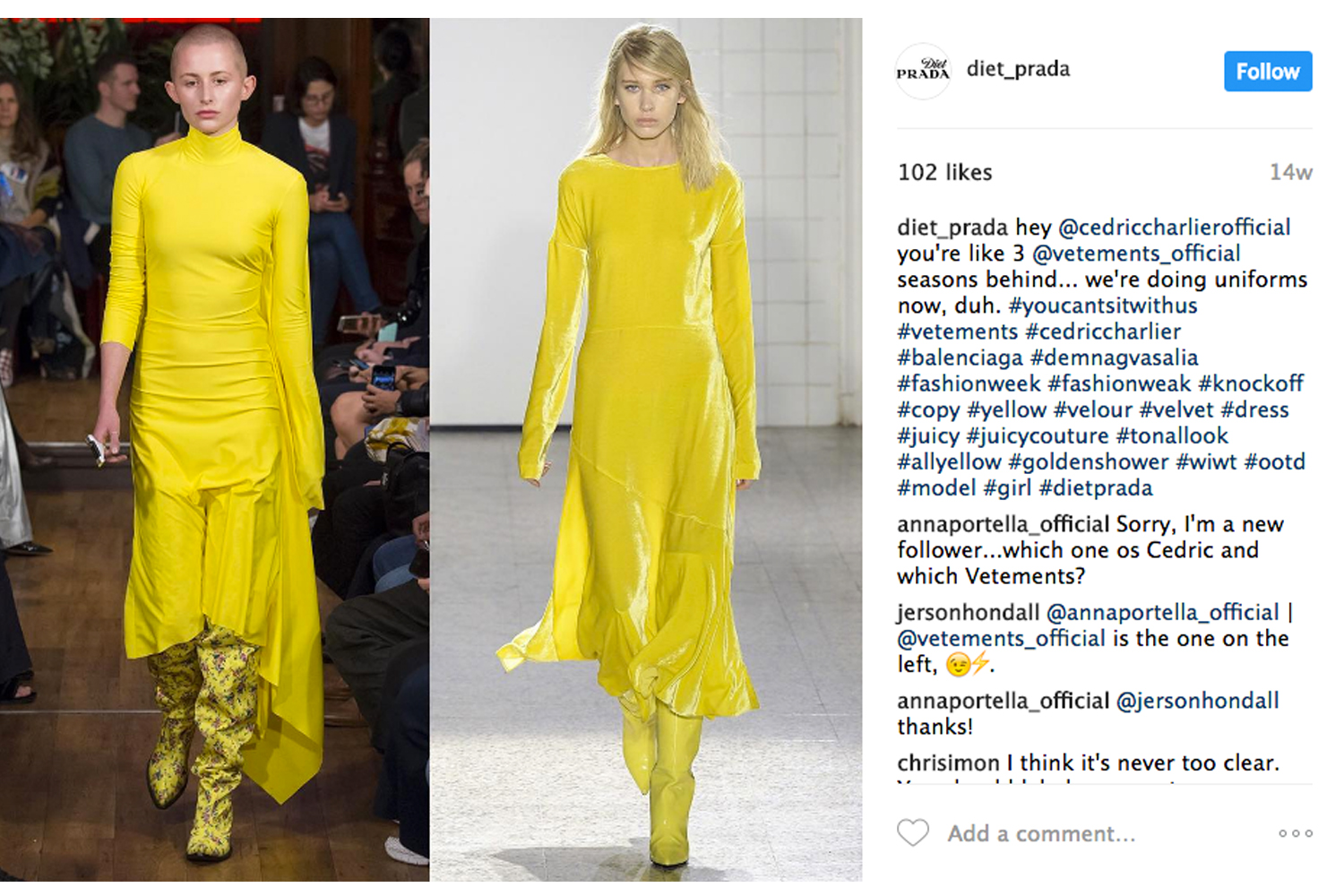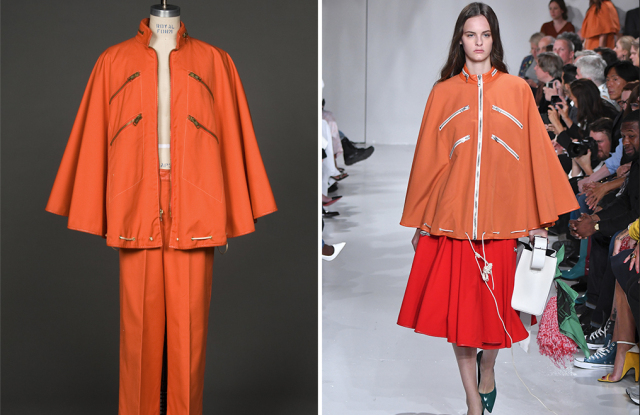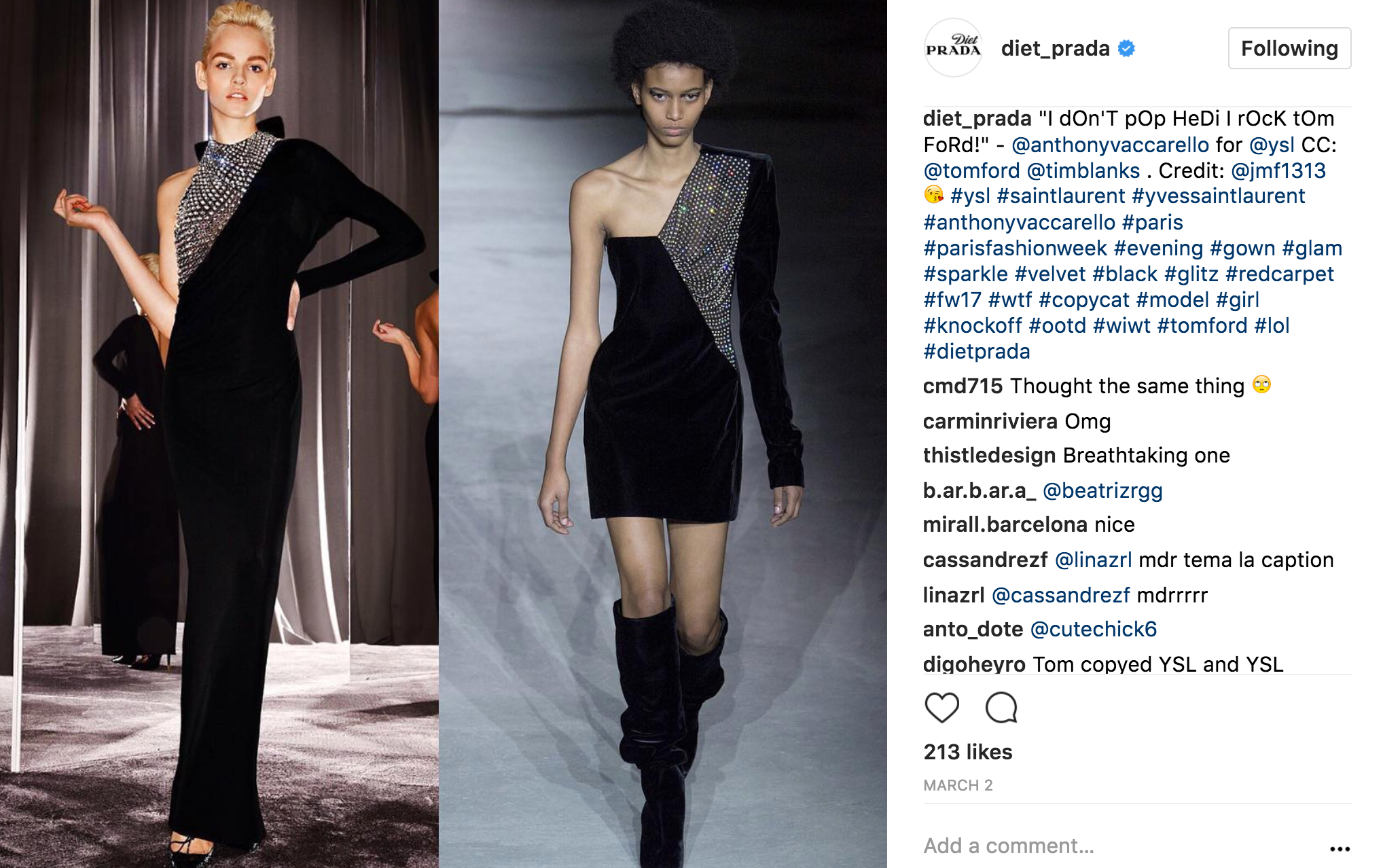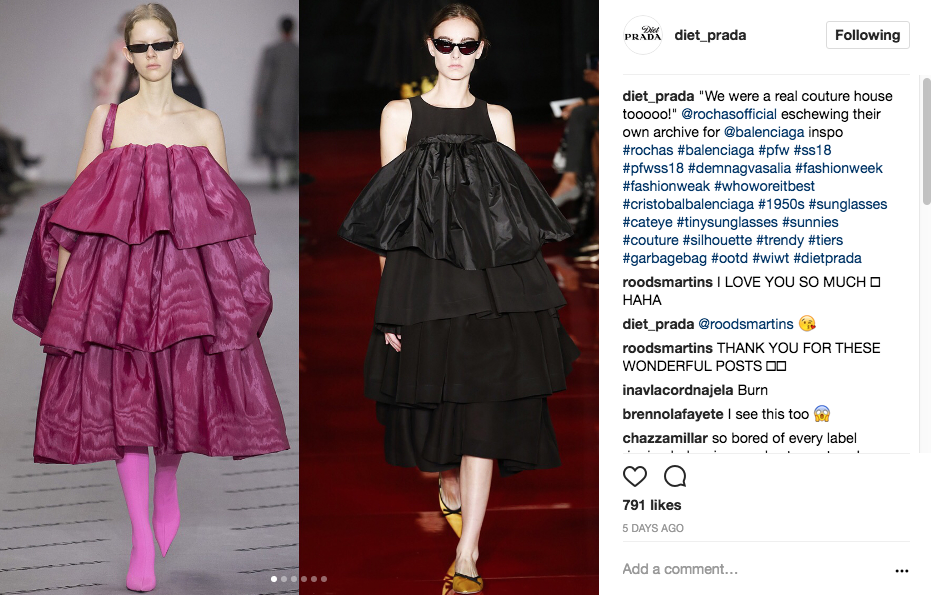Diet Prada: The Influence, The Inspiration, and The Copy
 What continues to dominate as one of the most hyped about Instagram accounts for fashion enthusiasts is none other than the sharp-tongued, ever-fierce Diet Prada. The duo behind the influential social media platform has been described by The Cut as the “No-Filter Fashion Critics for an Instagram Age” and by the Financial Times as “Fashion’s most powerful critic”. Diet Prada is celebrated in equal measure by fashion novices and professionals, for bluntly “naming and shaming” established and emerging designers, stylists, photographers, editors and other creatives for "knocking each other off". Results can be equally humorous and humiliating, and never hold back opinion regardless of a recipient’s status in the industry.
What continues to dominate as one of the most hyped about Instagram accounts for fashion enthusiasts is none other than the sharp-tongued, ever-fierce Diet Prada. The duo behind the influential social media platform has been described by The Cut as the “No-Filter Fashion Critics for an Instagram Age” and by the Financial Times as “Fashion’s most powerful critic”. Diet Prada is celebrated in equal measure by fashion novices and professionals, for bluntly “naming and shaming” established and emerging designers, stylists, photographers, editors and other creatives for "knocking each other off". Results can be equally humorous and humiliating, and never hold back opinion regardless of a recipient’s status in the industry.

Recently, the social media account has recently called out e-commerce brands (e.g Borrow my Balmain) for selling fake Dior dresses, and made the winning case that brands such as Victoria’s Secret are guilty of shamelessly copying the packaging by makeup artist Pat McGrath, hence rightfully giving credit where credit is due and calling out unoriginal thinkers. In an age where it is unfortunately not uncommon for fashion critics to either not be invited to shows, based on an inferior review or bribed to provide glowing commentary in exchange for a nice gift, it is refreshing to have access to a Diet Prada who has captured the ability to call out those who deliver a “diet” version of an original. Diet Prada, among others, has the potential to not only proactively educate consumers and next-generation creatives but to act as a third party regulator, calling out copycats in an effort to encourage more creative autonomy. However, with such great responsibility holds great power.
The notion of radical transparency is seeping across all areas in the industry which is important and appreciated, especially by younger generations such as Generation Z. While calling out the “cheap copycats” is, yes, needed, the tactic Diet Prada employs to point the finger is, at least for me, questionable. Harsh daily accusations oftentimes leave a sour taste on my tongue with chosen words resonating more in the line of mean girl bullying than cultural enlightenment. Not only does it promote a stereotypical reputation that fashion is indeed a cold, snide industry furtively judging each other, but, more importantly, it fails to distinguish between copy and influence where the latter is a cornerstone which defines the essence of fashion.

The platform hides behind an anonymous identity, although according to The Fashion Law it is run by Tony Liu and Lindsey Schuyler, and therefore enjoys the liberty to write and post what it wants - oftentimes lacking much needed professional respect. For example, it has called out Dolce and Gabbana for copying Gucci and directly accused the brand of not being relevant in the course of fashion history. Does hiding behind a screen justify bullying?
Especially during the creative rush at Fashion Week presentations, it is amusing to note how designers are influencing one another as well as establishing which sartorial references have been chosen to emerge yet again as a trend- currently, we see a return of the emphasised shoulder thanks to Balenciaga and sequenced glamour thanks to Saint Laurent. Should they too be publicly shunned for reinterpreting an idea?
It is important to acknowledge that not everything that looks similar on the runway is a stolen “copy.” Considering the industry's archival legacy it is nothing, if not dependent on a design team's ability to take influence from the past and translate it to modern day. Should Coco Chanel’s creativity be questioned as she “only” adapted tweed menswear for women? Should Yves Saint Laurent be scrutinised for adapting ancient tribal prints for his iconic African Queen collection? Is John Galliano a copy-cat for implementing Rococo dresses for his Dior Haute Couture collection? Of course not. Most of today’s collections presented on the runway each season tend to be derived largely from existing creations and reborn to match today's needs.

With many houses presenting more than 4 collections each year, it cannot be expected of creatives that each piece must be a “new look”. There are only so many ways to cut an A-line dress. Successful design is always prone to feature some already-existing elements.
Today it is easier than ever before, thanks to social media and digital archives (e.g Vogue Runway) to pinpoint a designer's inspiration which at best provides cultural context and at worst unjustly leads to social media call-outs humiliating creative teams which are already under incredible pressure.
While online call-outs may prove to be particularly “shareable” and spark a general “LOL” - shaming designers for looking to the past for inspiration is not how fashion functions and ultimately discourages experimentation, innovation, and creative autonomy. I argue that instead of carelessly labeling all familiar influences as a cheap imitation, let’s celebrate familiar references and question why certain codes emerge again back into fashion. Inspiration is a beautiful thing - not an unforgivable crime of plagiarism.